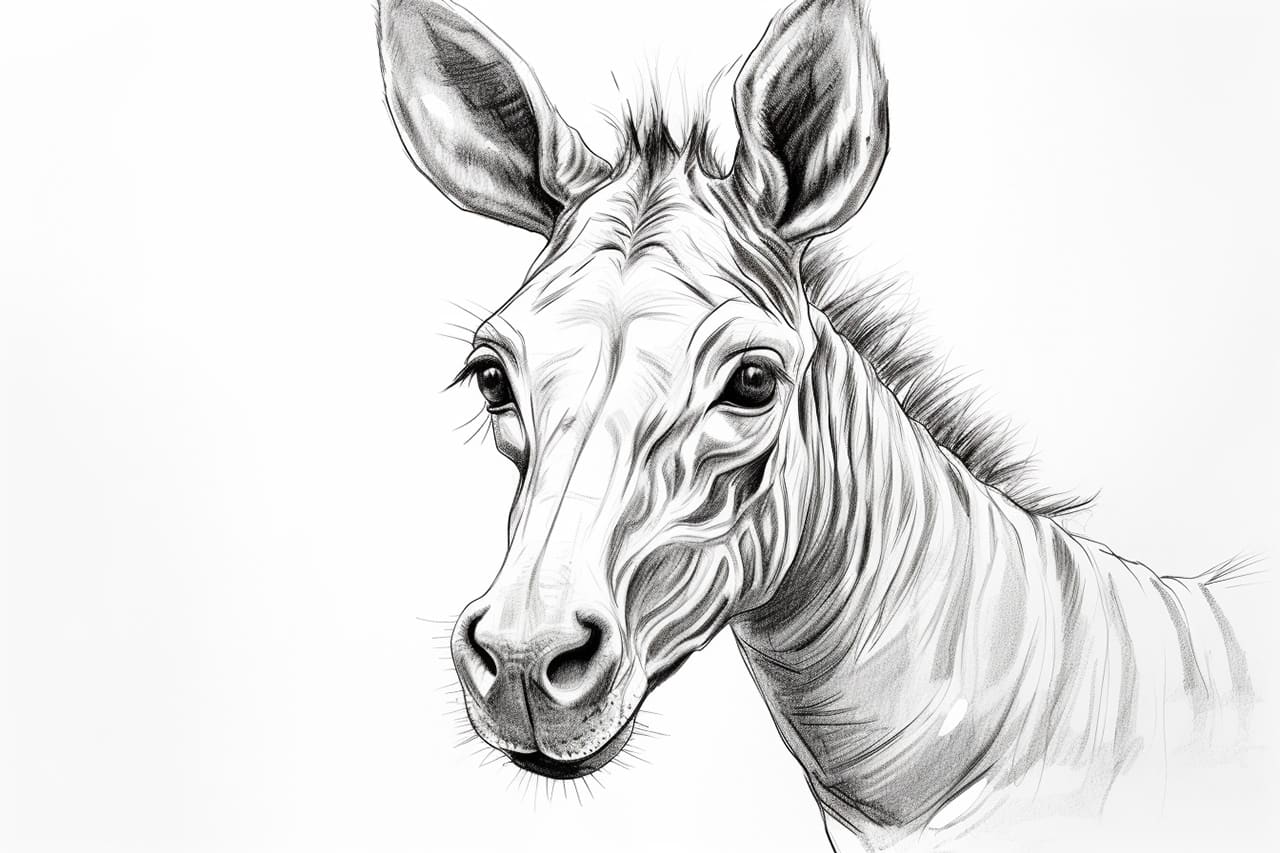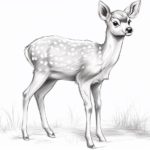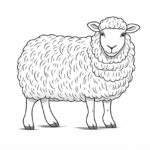Welcome to this step-by-step guide on how to draw an Okapi, the beautiful and unique animal found in the African rainforest. Whether you’re a seasoned artist looking for a new challenge or a beginner wanting to improve your drawing skills, this tutorial will help you create a stunning Okapi illustration. So grab your pencil, paper, and let’s get started!
Materials Required
To begin your Okapi drawing, gather the following materials:
- Drawing paper or sketchbook
- Pencil (HB or 2B recommended)
- Eraser
- Fine-tip black marker or pen (optional)
- Colored pencils or markers (optional)
With these supplies ready, you’ll be well-equipped to bring the Okapi to life on your page.
Step 1: Start with Basic Shapes
Begin by lightly sketching basic shapes to establish the Okapi’s proportions. Start with an oval shape for the body, a circle for the head, and smaller circles for the ears. Connect these shapes with simple lines to outline the Okapi’s body.
Step 2: Add Facial Features
In this step, focus on the Okapi’s face. Draw two almond-shaped eyes, leaving some space between them. Add a small, triangular-shaped nose in the center, and a horizontal line slightly below it to mark the mouth. Don’t forget to include the distinctive white stripes on the face, extending from the eyes to the snout.
Step 3: Define the Body
Now it’s time to add more details to the Okapi’s body. Draw the characteristic short, rounded horns on top of the head. Add the ears by sketching their unique shapes. Use curved lines to define the Okapi’s neck, back, and legs. Remember to leave some space for the legs to appear in a walking position.
Step 4: Sketch the Legs and Hooves
With the basic body outline in place, focus on drawing the legs and hooves of the Okapi. Use long, curved lines to create the front legs, starting from the chest and extending towards the ground. Add smaller, rounded shapes at the bottom to represent the hooves. Repeat this process for the hind legs, remembering that they should appear slightly longer than the front legs due to the Okapi’s natural posture.
Step 5: Refine the Face and Neck
Return to the face and neck of the Okapi, and refine the details. Add depth to the eyes by drawing small circles within them and shade them partially. Define the shape of the nose and mouth using more precise lines. Pay attention to the unique pattern of the Okapi’s face and add the required stripes and markings using short, curved lines.
Step 6: Add Body Details
In this step, focus on adding more details to the Okapi’s body. Observe the reference image or your own imagination to draw the patches and markings on the Okapi’s fur. These markings usually consist of irregular shapes and lines that can vary from one Okapi to another. Take your time to achieve a realistic and visually appealing result.
Step 7: Refine the Legs and Hooves
Refine the previously sketched legs and hooves by adding more details and definition. Pay attention to the muscular structure of the Okapi’s legs and emphasize it through subtle shading and contouring. Add curved lines to mark the joints and differentiate between the different parts of the legs.
Step 8: Finalize the Outline
Now that your Okapi is taking shape, go over the entire drawing and finalize the outline. Erase any unnecessary guidelines and make sure the proportions and shapes are accurate. Use a darker pencil or a fine-tip black marker to trace over the final lines, creating a clean and defined outline.
Step 9: Add Shadows and Textures (Optional)
For those looking to add more depth and realism to their drawing, this step is for you. Study the reference image or imagine a light source, and add shadows accordingly. Use hatching or cross-hatching techniques to create shading and texture on the Okapi’s body. Take your time with this step, as it can greatly enhance the overall appearance of your artwork.
Step 10: Color Your Okapi (Optional)
If you prefer to add color to your drawing, now is the time to do it. Use colored pencils or markers to bring your Okapi to life. Observe the actual colors of an Okapi or use your imagination to create a unique and vibrant representation. Layer the colors gradually, building up the tones and textures of the fur. Remember to use gentle strokes and blend the colors smoothly for a more realistic effect.
Once you’ve finished coloring your Okapi, step back and admire your masterpiece!
Conclusion
Congratulations on completing your Okapi drawing! By following these step-by-step instructions and using your creativity, you have successfully captured the essence of this facescinating African animal. Whether you’re a beginner or an experienced artist, drawing an Okapi offers an opportunity to improve your skills and learn more about nature’s diversity. So keep exploring the world of art and continue to challenge yourself with new subjects, techniques, and animals to draw.









